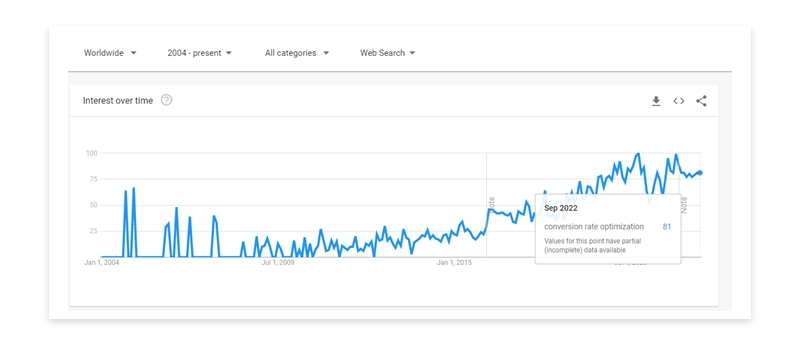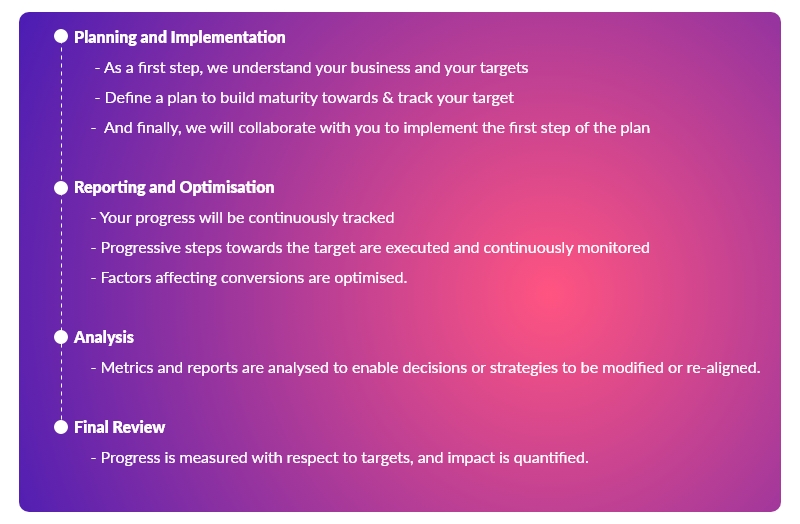Turn Your Visitors into Paying Customers and Boost Your Sales!
Businesses LOVE to generate inbound traffic. They run ads, deploy SEO, send out emails, blast on social media, and use paid advertising to drive traffic to bring MORE visitors!
However, when starting an ecommerce business, many business owners overlook conversion rate optimization, which is not unusual. What happens when people do reach your site or product? Building inbound traffic is excellent, but it’s only worth it if you can turn those prospects into paying customers and boost sales!
According to Wordstream, conversion rates are highly variable, depending on the industry. However, the overall average conversion rate currently sits at 2.35%. This means that out of 40 visitors to a company’s website, one performs the action they want, whether it’s making a purchase, filling out a survey, or something else. Meanwhile, the top 10% of organizations have average conversion rates of 11.45% or higher.
So, there’s much room for improvement on your site – direct efforts toward increasing your website’s conversions. Let’s jump in, shall we?
What is CRO, and how does it impact your business marketing efforts?
Conversion rate optimization has seen increasing interest, as depicted in the Google Trends graph below:

Most organizations have moved from the awareness and interest stages to decisive action. In most businesses, conversion rate optimization efforts are focused on strategy. There’s more attention paid to developing and implementing a conversion strategy for the long haul.
Conversion Rate Optimisation (CRO) is the process of increasing the number of conversions, from visitors to customers, on your website or online channels. Conversions are recorded when new visitors turn into potential customers who click on your ads or fill out forms or surveys. Conversion rate optimisation is a process through which brands raise their number of site visits, product/service sales, newsletter opens, etc. Overall, the goal is to elicit some interaction from a user or target audience.
What is CRO Beneficial for?
- Increased Revenue: This is the primary benefit. The higher the number of conversions, the greater the impact on your bottom line.
- Better User Experience: A good conversion flow results in a more delightful user experience. Less friction in ecommerce, SaaS, and Fintech means a more delightful product.
- Improved Retention: Return visits are more likely when users have a positive user experience. Though this certainly applies to ecommerce stores and Fintech applications, in SaaS, it’s vital, as SaaS CRO often focuses on getting users to adopt product features they don’t currently use.
How to Calculate Your Conversion Rate
Calculating your conversion rate is straightforward. Take the number of conversions and divide it by the total number of web visitors you had in a set period.
Conversion rate = (conversions / total visitors) * 100%
For example, if you had 10,000 visitors and 200 sales over a month, that is a 2% monthly conversion rate. You can adjust your conversion rate depending on periods, demographics, and other variables. If you set up your tracking correctly, most online advertising (for example, Google Ads, Facebook Ads) and analytics platforms (for example, Google Analytics) can show you your conversion rate.
5 Ways to Increase Your Conversion Rate Optimization
Marketers are beginning to focus on their overall content experience by creating an environment that includes quality structured content, a visually appealing user experience and an efficient user interface. These aspects have a significant impact on the CRO. CRO, in turn, helps your brand gain visibility and improves your ROI and overall revenue.
Here are seven benefits of conversion rate optimisation to inspire you:
- Use personalization
- Add social proof
- A/B test CTAs
- Update high-converting pages
- Get rid of distractions
#1 Personalization
There’s no doubt that personalization helps boost conversions.
According to an Adobe study, 40% of online revenue comes from returning customers, who only represent 8% of site traffic. Using personalized ecommerce recommendations, enterprises can build stronger, more profitable relationships with their users.
For the following categories of emails, personalization can significantly impact conversion:
- Welcome emails
- Upselling and cross-selling emails (with or without discounts)
- Follow-up emails to inactive customers
- Abandoned cart reminder emails
- Newsletters
- Special offers to loyal customers
- Holiday-specific emails
#2 Social Proof – The Bandwagon Effect
How can digital social proof persuade visitors or customers to buy? Social proof is a marketing tactic – if other people are interested in or have purchased a product, you are more inclined to do the same. Following are some examples of social proof:
- Reviews and testimonials
- Customer count
- Industry endorsements
- Trust seals
The existence of social proof may quickly increase the trustworthiness of your brand because testimonials about how your product offers a great experience come from unbiased sources.
#3 A/B Testing
The pinnacle of the conversion rate optimization process is running A/B tests. Also known as split testing, this is the process of showing two variations of a web page to different website visitors simultaneously. When you compare the data on which variant drove the most conversions, you may understand which one will be more effective on your website. The plan is to discard the underperforming version while testing new iterations of the successful version. This can be done by altering page elements like ad copy, images, colours, outbound links, conversion buttons, font styling, etc.
#4 Update High-Converting Pages – Change is the Only Constant
Google updates its algorithm, user preferences change, and technology gets updated. This means there’s a good chance your previously high-converting web pages are now languishing at the bottom of your analytics report.
Compare your highest converting pages month-after-month or year-after-year with Google Analytics. Once you have a list of all your impressive pages that are now major losers, make a plan to update them. Be sure to:
- Optimize headings
- Update broken links
- Add new stats
- Add new internal links
- Check your page speed
- Update outdated content
HubSpot doubled its leads and increased organic traffic by 106% just by updating old content.
#5 Get Rid of Distractions
Website visitors are often easily distracted. This means you can’t afford to have unnecessary images or content on your website, slowing down the speed of your page or delaying your customers’ understanding of what you have to offer. Remove every element that’s not crucial to emphasising the offer that you want visitors to accept.
Try these tactics as well:
- Minimize links on your menu so your most important call to action stands out.
- Avoid suggesting that your website visitors check out your latest social media posts.
A 4-Step CRO Based Strategy
In this increasingly competitive online marketplace, the conversion rate is the most important key performance indicator (KPI) for business growth.
If your website is struggling to convert, you are losing business with each passing day.

While every business has its own unique goals and expectations for the future, there are specific conversions that every business owner can agree on. Increasing customer retention, increasing website traffic, and increasing profit are all benefits of conversion rate optimisation. Just remember, CRO is a process that will take time to perfect. Do your best to implement these methods and listen to what your customers are telling you.
What are you waiting for? Enlist our CRO services to start generating more revenue!
Notes and Sources
- https://www.forbes.com/sites/forbesagencycouncil/2020/03/11/three-ways-to-increase-your-conversion-rate/?sh=7dd381cc7896
- https://www.mckinsey.com/capabilities/growth-marketing-and-sales/our-insights/the-value-of-getting-personalization-right-or-wrong-is-multiplying
- https://support.google.com/google-ads/answer/2684489?hl=en#:~:text=Conversion%20rates%20are%20calculated%20by,50%20%C3%B7%201%2C000%20%3D%205%25

It really is a shame when a visitor only visits your website and nothing else. An increase in visitors does not really help if they don’t become a customer. Although in some way, it will give the business owner a chance to re-evaluate strategies or re-design the website. So thankful that I have stumbled upon this article, such a good read.